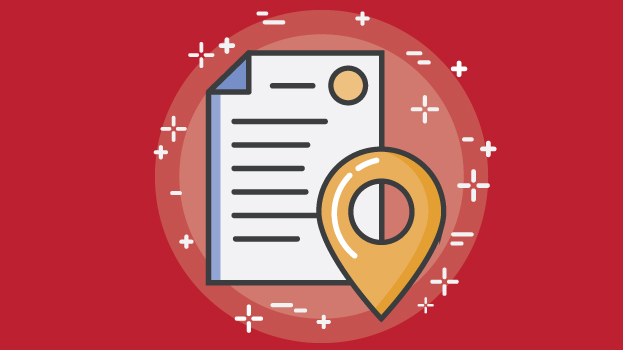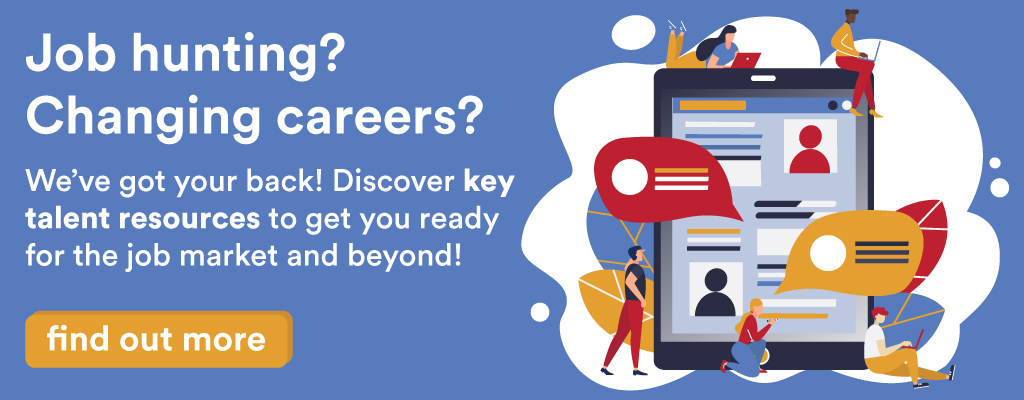Your resume is your most important tool when looking for work as is the key to making a good first impression and is your ticket to being invited back for an interview.
Yet, in our 25 years’ experience recruiting thus far, we still see candidates creating and sending generic resumes, without putting any thought towards tailoring it to the market or job at hand.
So, if you find yourself looking for work in Australia or New Zealand, taking the time to format your CV to match local expectations can make all the difference to a prospective employer.
To help you tailor your resume, our local talent acquisition experts have compiled and highlighted key tips, requirements and examples to ensure that your resume aligns with the ANZ market. So get ready to take some notes and let’s dive in!
Let’s Start With The Basics
Length
In Australia and New Zealand, resumes are longer than what you might be used to. Unlike the US and many European countries where job applicants are encouraged to limit their CV to just one page, ANZ recruiters expect a more detailed account of your work history.
If you’re new to an industry, or a recent graduate with limited experience to show, a one to two-page CV is acceptable.
However, when applying to mid tier or more senior roles, recruiters in ANZ are willing to read up to 2 – 3 pages if it means getting a better picture of your strengths, skills and experience.
In line with this practice, CVs are expected to be up to 5 pages for specialised, niche or executive roles.
Personal Details
Unlike other countries, it’s illegal for Australian & New Zealand employers to ask you certain personal details such as your age, marital status, religion, sexual preference and nationality. This law exists to minimise sub-conscious bias and discrimination throughout the hiring process.
By that same token, there is no need or expectation for candidates to display a headshot on their resume when applying for work in Australia or New Zealand. In fact, not adding one will give you more space to talk about what really matters: your experience!
Language
When applying for a job in Australia or New Zealand, make sure to use British English throughout your resume and cover letter.
Although American English is the default language for most pieces of software (such as Microsoft Word), this is in fact only used in the US. This small detail can quickly show a recruiter if you’re paying attention to the local market or not.
Formatting
Make sure to keep your formatting clean and simple.
It’s natural to want to be creative so as to stand out, but what may seem like a point of differentiation for you may have the opposite effect by only confusing the recruiter more.
In the same spirit, we recommend using a standard easy to read font like arial or calibri, as well as steer clear of tables, graphs or images.
This is because many ANZ businesses use an Applicant Tracking Systems (ATS) which “translates” your CV into usable digital data for their CRM. Unnecessary detail or unrecognised fonts tend to cause errors in the system, which can halt your application.
Last but not least, we recommend displaying your resume on A4 sized paper.
File format
When saving or submitting an application, we often find candidates left wondering whether PDF or Word format is better.
The best advice we can give here is to make sure to follow the provided guidelines, if there are any. Most ANZ recruiters or hiring websites will stipulate their preferred file format, which a lot of candidates tend to miss in the effort of “being efficient” (aka. going too fast).
If it turns out there are no clear guidelines, then your chosen file format will mainly depend on the way you submit your application.
As mentioned above, larger companies tend to use Applicant Tracking Systems (ATS), which can get triggered by PDFs, causing errors. As such, if you’re applying to jobs online through a big recruiting platform, we recommend submitting a Word document.
On the other hand, if you are sending your resume directly to someone, via email, it is safer to send a PDF version of your resume to prevent any discrepancies in formatting.
7 Essential Steps To Drafting The Perfect ANZ Resume
1. Personal & Contact Details
Recruiters shouldn’t have to fuss to find your personal and contact details, which is why we recommend placing them at the very top. These should include: your full name, address, phone number and email address at the very least.
“Sharing your residential address is quite handy for recruiters to determine where you’re currently living. In the case where the candidate doesn’t wish to give away their full address, I recommend sharing the suburb and the country in which you live at the very least” says our Senior Talent Acquisition Manager, Liz.
If you are originally from a different country, it is also wise to indicate if you are an Australian or New Zealand citizen, Permanent resident or on a certain visa. This will serve to show that you are eligible to work in ANZ.
In addition to this, our Talent Acquisition Manager, Michael says that adding a link to your LinkedIn profile is also highly recommended, as it facilitates the recruiters search and shows you’ve thought ahead.
2. Headline
The headline on a resume is essentially your tagline.
Our advice is to place your headline straight under your name and match it with the job you are applying for. It’s also worth including any certifications that add credibility and, if possible, highlight your industry specialisation. Here are a few examples to illustrate our point:
Name: Jane Smith
Headline: Chief Financial Officer | Chartered Accountant | Logistics
Name: John Doe
Headline: Electrical Engineer | NEBOSH Certified | Solar PV & Renewables
3. Professional Profile
Also referred to as a Career / Executive or Professional Summary, your professional profile is where you can inject some ‘colour’ into your CV, using storytelling tools to tell your story and sell your “brand”. Think of it as your 30-second elevator pitch.
As a rule of thumb, this section of your CV should be no longer than 3 to 5 sentences. The goal is to catch the hiring manager’s attention and make them want to know more.
Most candidates will use this space to detail and summarise their overarching experience, qualifications and specialisation. For example:
“A dynamic Chief Financial Officer with 15 years’ experience in the logistics sector, I offer chartered accountant expertise in M&A, divestment and fiscal activities.”
While that approach is reasonably effective, do one better and get to the heart of what makes you unique and exceptional:
“Combining Chartered Accountant qualification with astute commercial acumen, I bring 15 years’ success enabling the profitable growth of ambitious corporations in the logistics sector.”
4. Employment History
You may be familiar with the 2012 study that claimed recruiters spend an average of just 6 seconds reviewing an individual’s resume.
Using an eye-tracking technique, this research found that recruiters focused on your name, current job title, company and dates of employment.
With that in mind, we highly recommend you include this information on the first page of your resume in a clear and easily digestible format.
As a rule of thumb, we also recommend presenting your experience in reverse chronological order as your future employer will want to know what your latest experience was.
Furthermore, in the same vein as tailoring your resume to the market, we also recommend doing so to the job and industry you’re applying to. With that in mind, make sure to highlight all relevant achievements and responsibilities you have had in the form of bullet points.
It’s worth noting that Australians culturally dislike arrogance and prefer to view achievements as facts. In order to action this for your own resume, we suggest:
– Avoiding first-person references when laying out your responsibilities.
e.g. “Provide leadership to a team of 5 HR Advisors” rather than
“I lead a team of 5 HR advisors”.
– Avoiding 3rd person references.
e.g. “Molly leads a team of 5 HR Advisors”.
– Presenting your achievements in a fact-based manner.
e.g. “Improved staff engagement by 30%, defining and implementing a targeted strategy empowering employee input and influence.” rather than
“Defined and implemented a targeted strategy empowering employee input and influence, resulting in a 30% increase in staff engagement scores.”
On another note, if you’ve worked for smaller companies that may not be recognised by the general public, our experts recommend you include a 1 to 2-line description of the business on top of your achievements and responsibilities.
Finally in Australia, recruiters are generally looking at your last 10 years of employment history. Only go back further if you have earlier experience that is highly relevant or if you’re applying for an executive position.
5. Education, Training & Certifications
Australians, like most westerners, value education and continuing professional development.
With that in mind, be sure to highlight your academic and professional qualifications by including the name and major of your degree, along with the awarding institution. Here are a few examples to illustrate our point:
Master in Journalism – Sciences PO School of Journalism
Bachelor of Science, Psychology – The University of Cambridge
Bachelor of Engineering, Photovoltaics & Solar – University of New South Wales
It’s worth noting that when displaying any degree or certification, there is no need to include the year of completion on your resume.
In order to avoid unnecessary noise on your resume, we also recommend only mentioning education that is relevant (e.g. no need to include high school experience if you’re applying for a senior or executive role).
If you’re from overseas, bear in mind that school systems differ from country to country, so making sure to translate your degree(s) and education to English is key.
6. Additional Information
This is your chance to showcase your personality and extracurricular activities so as to give your prospective employer a glimpse of how you’ll contribute to their organisation and your future team beyond your job. This section is usually most regarded by the hiring manager with whom you will be the most in contact with.
Additional details that may relevant include but aren’t limited to:
– Spoken Languages
Australia and New Zealand are both highly multicultural countries and remain key markets for business expansion. As such, both countries tend to host many foreign multinationals as well as keep relations with countries overseas.
With that in mind, if you speak any other languages to English, we recommend mentioning them here, as they may be highly valued in the selection process. If you do, we recommend being clear about your experience. Here is an example:
English: Fluent
French: Mother Tongue
Mandarin: Intermediate
– Non-Executive / Committee / Voluntary Job Roles
Volunteering experience is highly regarded in ANZ as it shows commitment and a sense of community. If you have such experience(s), we highly recommend expanding on these, as you would your professional experience, provided they enhance your value proposition as a professional.
– Professional Memberships / Affiliations
E.g. Member of the British Psychological Society
Fellow of the Financial Planning Association of Australia
Member of the National Association of Sales Professionals
Member of the Australian HR Institute
– Publications
Provided they are relevant, interesting and credible, adding links to publications you have been featured in is a great way to showcase industry expertise.
7. Referees
With growing concerns around the data safety as well as increasing restrictions on data protection, ANZ recruiters don’t expect to see referee names, addresses or telephone numbers on your resume. As such, writing ‘References available upon request’ is perfectly acceptable.
Although this may seem redundant, references are incredibly important and relied upon in ANZ. As such, including a “Referees” section with the above statement, although short, still showcases that you are at the ready to provide proof of employment should the need arise.
Should you choose to provide your referees’ information straight away, we recommend showcasing 2 referees from different workplaces, and providing a landline instead of a mobile number. Alternatively, you could also link their name to their LinkedIn profile for ease.
Bonus Tips
Although you should already be on the right track with all of the above recommendations, one can never be too careful. As such, it’s important to use common sense when drafting your CV.
Firstly, check your spelling. As simple as they may be to avoid, spelling errors and typos are the most common mistakes in resumes. They’re particularly damaging because they convey to potential employers that you lack attention to detail.
Secondly, be consistent and coherent in the way you decide to structure your resume. Our Senior Consultant, Elena emphasises that “if you decide to organise your employment history starting with company name, job title and dates, then it’s recommended to follow this structure throughout your resume.”
“Don’t use generic statements,” adds Michael. Whether it be when mentioning their responsibilities or skillset, candidates often tend to stay on the safe side and overuse common adjectives or statements. If you want your resume to stand out, you need to distinguish yourself from the crowd. Perhaps try and collect a few written references from previous colleagues and managers to draw inspiration from.
Don’t gloss over career breaks. If you have taken time out from your career, such as to travel, parent or retrain, it’s important not to gloss over them or try to hide them in your CV. Instead, outline how you used that time to generate value in different areas of your life or build your skillset.
In the same vein as our above point, do not blindly copy resume templates that you find online. That’s a guaranteed way to make yourself look like every other candidate. Remember, the goal is to stand out.
Pay attention to your online presence. LinkedIn plays a big role in Australian & New Zealand recruitment and should form a key part of your professional brand. Treat it like your digital CV. As such, make it a priority to keep your profile up to date and engage with people and content on the platform.
Be patient. ANZ recruitment processes can be lengthy due to wide stakeholder involvement and increased expectations. Try your best not to take the timeline personally. Although not all recruiters are cut from the same cloth, most will always do their best to keep you informed on your application’s progress.
All in all, when it comes to writing your resume, a cookie-cutter approach simply won’t work. More than ever, employers and recruiters look for individualised CVs that highlight conscientiousness and attention to detail.
As such, before conducting a job search in Australia or New Zealand, it’s important to research their norms and conventions. A failure to perform due diligence will be evident in your job application and will greatly increase the chances of it being tossed at first glance.
Instead, taking the time to localise the content and formatting of your resume will help you stand out from other candidates and increase your chances of being called back for an interview. And at the end of the day, isn’t that the goal?













 September 9, 2020
September 9, 2020 








